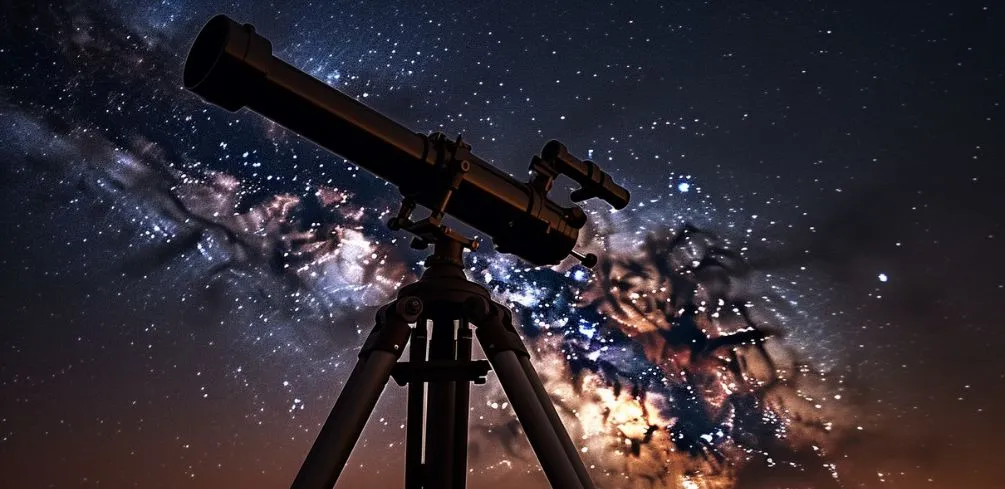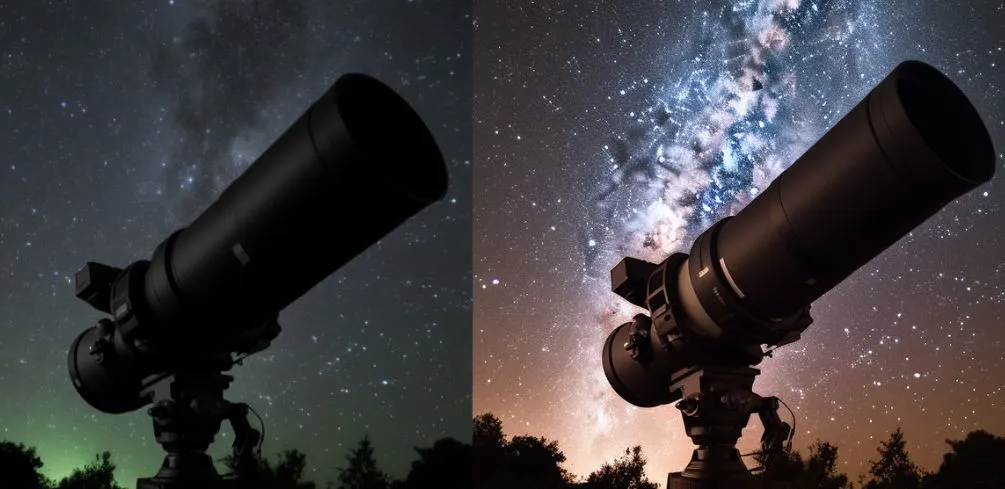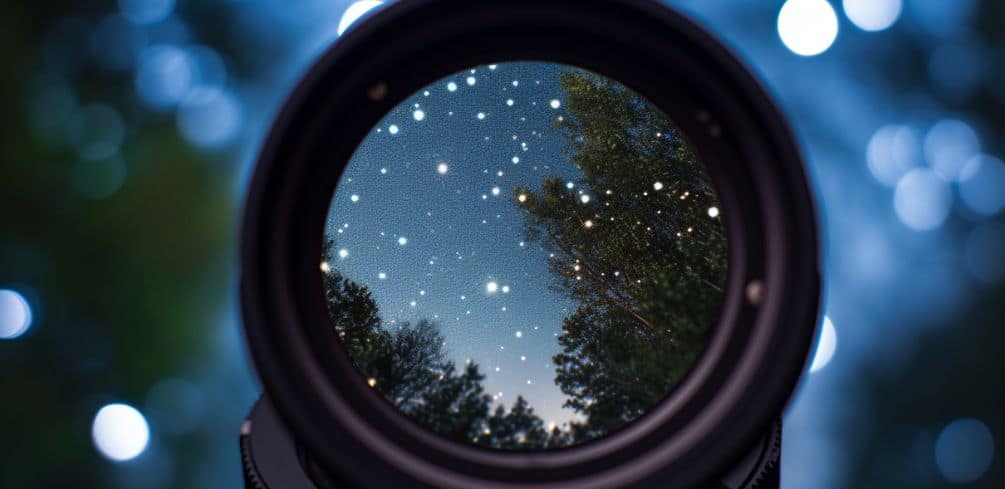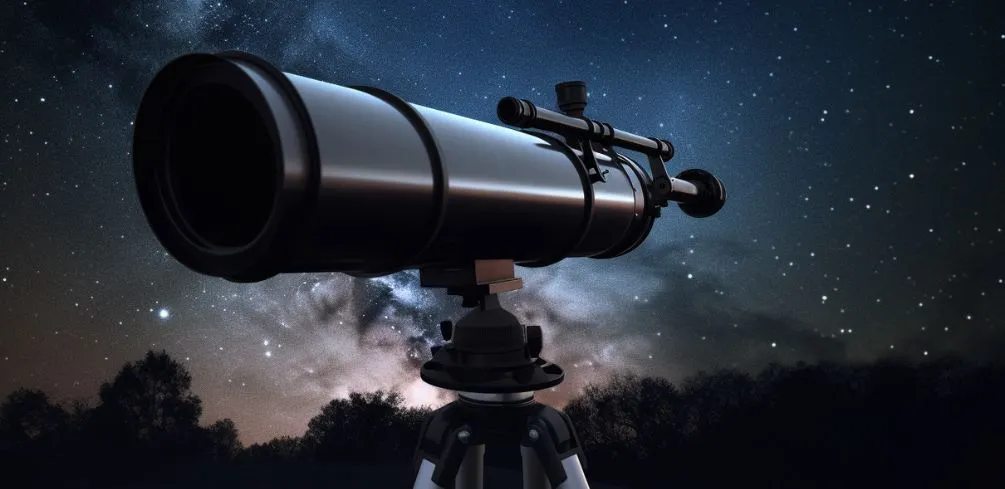As an avid stargazer, you might have experienced moments when your telescope’s images appear blurry or distorted. This frustrating situation can often be attributed to the misalignment of your telescope’s mirrors, a problem that can easily be resolved through collimation.
Collimation is the process of aligning the mirrors within your telescope to ensure optimal performance and crisp, clear images of celestial objects. By understanding how to tell if your telescope needs collimation and learning the proper techniques for alignment, you’ll be well-equipped to enhance your stargazing experience.
In this article, we will guide you through the process of determining whether your telescope requires collimation by using the star test method – a simple yet effective technique dependent on factors such as clear skies, proper eyepieces, and temperature. We will also discuss the importance of collimation for various types of telescopes and provide recommendations on how frequently it should be performed.
Finally, we will delve into three popular methods for achieving excellent collimation: using a collimation cap, employing a Cheshire eyepiece, and utilizing a laser collimator. With these tools in hand and our step-by-step guidance at your disposal, you’ll soon become proficient in maintaining perfect alignment for your telescope and producing stunning cosmic images.
Importance of Collimation
You might be wondering why all the fuss about collimation, but trust me, it’s a game-changer for your stargazing adventures. Proper mirror alignment ensures that your telescope can provide the best possible image clarity and performance optimization.
It’s important to understand how temperature fluctuations and movement can cause misalignment over time, which is why regular collimation checks are essential. Frequency determination depends on individual circumstances and usage, so make sure to keep an eye on how often you use your telescope and under what conditions.
Accuracy improvement through collimation is crucial for all types of telescopes, not just reflectors. By ensuring that the eyepiece aims appropriately at the center of the primary mirror, you’ll be able to capture clear and detailed images of celestial objects without any blurriness or double vision.
Remember that proper care and storage of your telescope can also reduce the need for frequent collimation checks – always store it in a stable environment with minimal temperature changes.
Collimating a telescope might seem frustrating at first, especially if you’re new to astronomy. However, with practice and patience, using methods like the collimation cap method or laser collimator method will become second nature as you work towards achieving optimal results from your stargazing sessions.
Don’t let minor setbacks discourage you; instead, focus on learning more about these techniques and applying them consistently each time you set up your telescope. Over time, this dedication to maintaining excellent collimation will reward you with breathtaking views of planets, stars, nebulas – everything our universe has to offer!
Signs of Misalignment

Noticing blurry or double images in your view? That’s a sign that your scope’s mirrors might be misaligned. Misalignment can result from various factors, including temperature fluctuations, improper storage, or accidental bumps during transportation.
Before jumping into collimation, it’s crucial to rule out other common causes like poor focus, low-quality eyepieces, and bad seeing conditions due to atmospheric turbulence.
Environmental factors such as air currents near the ground or heat radiating from nearby objects can also affect image quality. To identify whether collimation is the issue, perform a star test by focusing on a bright star in the night sky.
If you notice an asymmetrical pattern around the star when slightly defocused, this indicates that your telescope needs collimation.
Visual differences between properly and poorly collimated telescopes are noticeable during this test; concentric rings will appear even in a well-collimated scope, while distorted rings or off-center patterns indicate misalignment. Keep in mind that while some amateur astronomers may attribute any image problems to collimation issues, other factors could be causing these imperfections.
Addressing misalignment with one of the three popular methods – using a collimation cap, Cheshire eyepiece, or laser collimator – can vastly improve your telescope’s performance and overall stargazing experience. It’s essential to regularly check for signs of misalignment and adjust as needed based on usage and environmental changes.
Remember that proper care and storage of your telescope contribute significantly to maintaining optimal alignment over time. By understanding common misconceptions about telescope issues and knowing how to identify genuine signs of mirror misalignment accurately, you’ll be better equipped to enjoy clear and accurate celestial views through your telescope.
Star Test Method

Diving deeper into the star test method, let’s explore how this simple yet effective technique can help you identify misalignment and enhance your stargazing experience. This method is popular because it doesn’t require any specialized equipment other than your telescope and a suitable eyepiece.
However, you should be aware of some common mistakes that amateur astronomers make during star testing in order to achieve accurate results.
- Ideal conditions: Clear skies with minimal light pollution and atmospheric turbulence are crucial for obtaining reliable results from a star test. Temperature fluctuations can affect the accuracy of the test, so allow your telescope to acclimate to outdoor temperature for at least 30 minutes before conducting the star test.
- Equipment needed: Choose an eyepiece with medium-to-high magnification (around 100x-200x) for better visibility of potential alignment issues during the test. Ensure that your telescope mount is stable and level to eliminate external factors that may cause image distortion.
- Troubleshooting tips: If you’re still experiencing blurry or double images after collimation, consider checking for other possible causes such as dirty optics or damaged mirrors.
Comparing the star test method to other collimation techniques, like using a Cheshire eyepiece or laser collimator, the benefits lie in its simplicity and accessibility since no additional tools are required beyond your existing setup.
However, it may not offer the same level of precision as these dedicated instruments can provide. For those who are new to collimation or struggle with aligning their mirrors without visual aids, investing in a Cheshire eyepiece or laser collimator could save time and frustration down the road.
As you continue on your astronomical journey, remember that proper care and storage of your telescope will also help minimize alignment issues over time.
Regularly assess whether your instrument needs collimation by performing a quick star test each observing session – this habit will ensure consistently sharp images throughout countless nights under the stars. By staying diligent with your telescope’s maintenance, you’ll be able to enjoy the spectacular views of our universe with clarity and precision.
Collimation Techniques

It’s essential to master various collimation techniques, as around 80% of amateur astronomers struggle with achieving optimal alignment for their telescopes, impacting the quality of their stargazing experience.
One common dilemma is choosing between a collimation cap and a laser collimator. While both methods are effective in aligning your telescope mirrors, it ultimately comes down to personal preference and budget.
A collimation cap is more affordable and straightforward to use, but a laser collimator offers higher precision and can save you time and frustration in the long run.
On the other hand, the Cheshire eyepiece method brings unique benefits, such as being less sensitive to ambient light conditions and providing an excellent way to double-check your alignment after using other methods.
Common collimation mistakes include not allowing enough time for your telescope to acclimate to outside temperatures before starting the process or attempting adjustments without a proper understanding of how each mirror should be aligned. To avoid these pitfalls, consider investing in a comprehensive collimation tool kit that includes detailed instructions on adjusting both primary and secondary mirrors.
Additionally, remember that practice makes perfect – don’t be disheartened if you don’t achieve perfect alignment on your first try. Keep honing your skills through trial and error until you feel confident in your ability to accurately align your telescope.
For those interested in astrophotography, precise collimation becomes even more critical due to the increased sensitivity inherent when capturing images through a camera sensor compared to visual observation alone.
Using one or more of these tried-and-true techniques – the affordable simplicity of a collimation cap or the high-tech accuracy offered by a laser collimator – will help ensure that you capture sharp, well-defined images during your celestial photography sessions.
Remember that patience is key; take your time when performing adjustments to truly appreciate and enjoy whatever breathtaking sights await you beyond our Earthly atmosphere!
Troubleshooting Image Issues

When your stargazing experience isn’t quite as awe-inspiring as you’d hoped, it’s crucial to troubleshoot potential image issues and get back to marveling at the wonders of the cosmos.
First, ensure that you have the right adjustment tools on hand, such as a collimation cap, Cheshire eyepiece, or laser collimator. These tools will help you accurately align your telescope mirrors if they’re misaligned.
Next, consider environmental factors that could be affecting your view of the night sky – light pollution from nearby cities or towns can significantly impact visibility and clarity.
Another aspect to consider is eyepiece selection. Using an inappropriate eyepiece for your telescope or observing conditions can lead to poor image quality. Make sure to choose an eyepiece with suitable magnification and field of view for your intended observations.
Additionally, temperature effects can play a role in image distortion. Rapidly changing temperatures may cause the air inside your telescope tube to become turbulent, resulting in blurry images. To minimize this issue, allow your telescope time to acclimate before use and try observing during times when temperatures are relatively stable.
Lastly, watch out for common mistakes made by amateur astronomers that may contribute to subpar viewing experiences. For example, make sure that all optical surfaces are clean and free from dust or smudges; even minor impurities can degrade image quality considerably.
Also, ensure that your tripod is sturdy enough to support the weight of your equipment without shaking – any vibrations will distort images seen through the eyepiece.
By addressing these factors and properly collimating your telescope when needed, you’ll be well on your way toward enjoying clearer views of celestial objects as you explore the vast mysteries of space.
Maintaining Telescope Alignment
You’ll be amazed at how effortlessly you can keep your stargazing adventures crystal-clear by maintaining your telescope’s alignment! Temperature fluctuations and frequent handling can cause misalignment, so it’s essential to collimate your telescope at least once a month. Proper storage is also crucial.
Common mistakes can complicate the process of maintaining your telescope’s alignment. Some include not allowing enough time for temperature acclimatization before attempting collimation and over-tightening adjustment screws. Gentle adjustments are key to achieving optimal collimation without straining delicate components.
DIY solutions abound, but not all of them are worth pursuing. Some homemade fixes can cause more harm than good. Investing in proper equipment like Cheshire eyepieces or laser collimators will save time and frustration while ensuring precise alignments every time.
By avoiding common mistakes and employing effective tools, you’ll enjoy crisp celestial views with minimal effort. Isn’t that what stargazing is all about?
Conclusion
So, you’ve made it this far and still think collimation is just a fancy word for stargazing enthusiasts? Well, buddy, let me tell you – without proper collimation, your telescope’s about as useful as a sundial at midnight.
No crisp images of celestial wonders for you until those mirrors align!
Now go on and give your trusty telescope the tender loving care it deserves. Remember, a well-collimated scope makes for happy stargazers and envious neighbors wondering why their own views are so lackluster.

